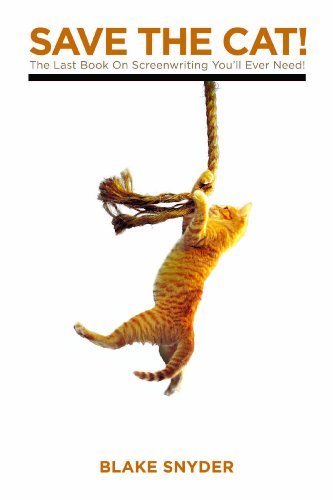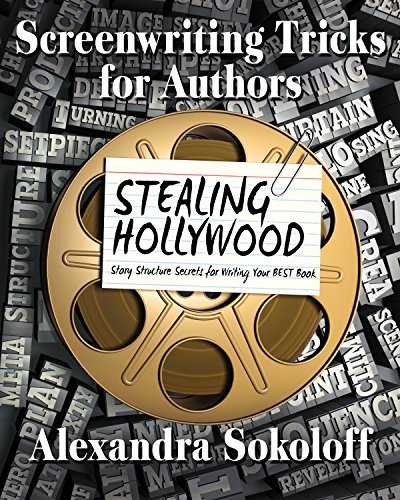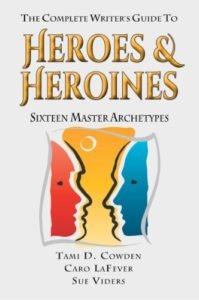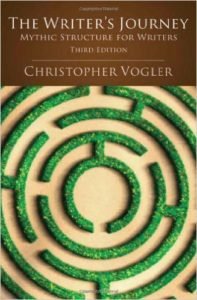A 5-Book Course In Screenwriting
Hey fellow screenwriters. This is De Jarous Bell. Welcome to The Plot Researcher blog where the film speaks for itself. The title of today’s post is A 5-Book Course In Screenwriting. If you’re just starting this journey of plot research, no worries. I recommend these five (5) awesome books that got me to the point where I could ask the right questions.
This book for the screenwriter is an excellent resource to get you used to the ideas involving screenwriting - i.e. Logline, beat sheet, exposition, premise, character arc, high concept, the promise of the premise, setpiece, stakes, and more. Save The Cat! builds a foundation for what screenwriting is, as a craft.
This book for the screenwriter delivers an in-depth study on topics introduced in Save The Cat! It is also an easy read. In Screenwriting Tricks for Authors Sokoloff breaks down movies at the end of her book and also throughout the book to teach the various writing techniques and story features - from story structure to characters. Nothing lacks luster or depth in this book (Sokoloff repeats herself a lot as well, which helps me). I especially gained insight with the double-whammy of the Three-Act, Eight-Sequence Structure, and her Index Card Method. This book is priceless, and can (by itself) write a story shell for you.
After reading Save the Cat and Stealing Hollywood, Richard Walter's book, Essentials of Screenwriting, literally brings it all together, as far as structure is concerned. Yes, literally; the topic of this book by UCLA Professor and Screenwriting Chairman is Integration. Do not miss this lesson. Only one other book that I've read on screenwriting focuses on integration the way Essentials does. Yes, many mention Plants & Payoffs and even integration; but Walter's comprehensive, book-length, discussion of integration dwarfs those introductions. That makes this book a must-have.
In Save The Cat! Snyder teaches the screenwriter to describe their characters with adjectives to write a strong logline. But, who 'are' my characters? Heroes & Heroines introduces 8 Heroes & 8 Heroines to get us used the idea of archetypes. There are dozens more of course, but 16 is plenty. This book uses layman terminology and has a simple presentation. It's lesson: without being able to map out your characters' insides you'll have nothing to map out as far as plot. How are your characters going to be paired? Paired? Or, ensemble? Heroic Journey? And, without the archetypes to flesh out your characters, your story will not grasp the subconscious mind of your audience. Simply, you run the risk of writing nothing.
This book sets the stage for selecting and determining interactions between personalities tailored to the story you want to tell. If you don't want to master Social Psychology, Jung or Astrology or Numerology, this book can at least make you look like you might have read up on some of those subjects.
However, I have those more advanced books here as well.
Myth, Occult, Mysticism, Magic, Esoterism, and other forms of witchcraft are taboo to most people, especially in Western culture. However, 'taboo' is the difference between storytellers and the audience. And, for a storyteller, the study of - at least - myth should be commonplace. It used to be a staple of culture. But now, we have religion. And, this abandonment of what's now taboo shows in the onslaught of crap that you can scroll through today on streaming movie sites. How many bad myths have you heard? The Writer's Journey attempts to continue the application of mythic story structure to contemporary story- film.
In this book, Vogler focuses on the mythical path to enlightenment, which is the story, by taking you to the beginning - the backstory of Story - Myth, Occult, Mysticism, Magic, and Esoterism. You will be introduced to ideas such as Tarot and how that relates to the hero's journey. Vogler also discusses archetypes.
There are many more jewels in this book. But you'll have to get it yourself and start reading. Again, I have those more advanced books here as well. In case you don't know, those taboos are more capable of explaining story than any screenwriting or writing book that you've read that doesn't mention them.
I hope this post helps you out. If you want to follow up on any of my references, you can find them at www.theplotresearcher.com/bibliography.
Please subscribe, like, and follow to receive updates of my latest posts.
Also, you can email me with anything, even if it's flawed. You ready? [email protected].
If you dare to, grab your lab coat. We're about to enter the jaws of Hades and recover the pearl from the ravenous dragon.




